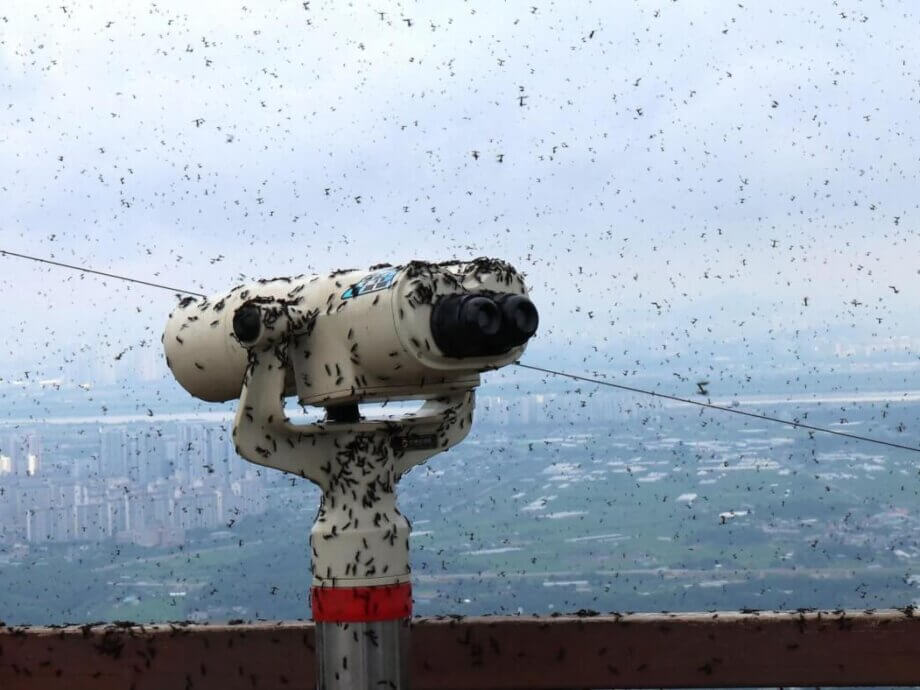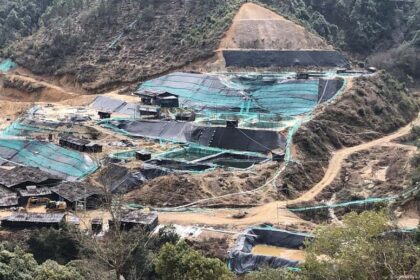Lovebugs Swarm South Korea: A Crisis Unfolds
In the summer of 2025, South Korea has found itself in the grip of an unprecedented outbreak of lovebugs, officially known as Plecia nearctica or Plecia longiforceps. These small, black-winged insects, often seen flying in mating pairs, have blanketed urban and suburban areas, particularly around Incheon’s Gyeyang Mountain and the greater Seoul metropolitan region. The sudden explosion in their numbers has transformed hiking trails, city streets, and public spaces into swarming corridors, sparking widespread discomfort and alarm among residents and visitors alike.
- Lovebugs Swarm South Korea: A Crisis Unfolds
- What Are Lovebugs and Why Are They Spreading?
- Government Response: Emergency Operations and New Strategies
- Public Reaction: Frustration, Adaptation, and Controversy
- Scientific and Ecological Context: Lovebugs and the Changing Environment
- Policy Shifts and the Future of Pest Management in South Korea
- Broader Implications: Climate Change and the Spread of Invasive Species
- In Summary
Social media platforms have been flooded with videos and images showing hikers wading through clouds of lovebugs, storefronts coated in insect carcasses, and municipal workers shoveling piles of dead bugs from public walkways. The outbreak has prompted thousands of complaints to local authorities, with many residents demanding urgent action to restore normalcy to their daily lives.
What Are Lovebugs and Why Are They Spreading?
Lovebugs are small flies native to subtropical regions, including parts of the southeastern United States, southern China, Taiwan, and Japan’s Ryukyu Islands. They are named for their distinctive mating behavior, in which pairs remain attached while flying. First detected in South Korea in 2015, lovebugs are believed to have arrived via trade routes from southern China, likely through the port city of Incheon.
Unlike mosquitoes or biting flies, lovebugs do not sting, bite, or transmit diseases. In fact, their larvae play a beneficial role in the ecosystem by feeding on decaying organic matter and enriching the soil. However, their sheer numbers during outbreaks can disrupt local biodiversity, create foul odors as carcasses decompose, and cause significant inconvenience for residents and businesses.
Experts point to several factors behind the recent surge in lovebug populations:
- Climate Change: Rising temperatures and longer, hotter summers have allowed subtropical species like lovebugs to expand their range northward. Seoul, in particular, is experiencing rapid warming, exacerbated by the urban heat island effect, where concrete and asphalt retain heat, creating microclimates ideal for insect survival.
- Urbanization: Dense urban environments provide abundant artificial light sources, which attract lovebugs in large numbers, and offer moist, sheltered breeding grounds.
- Global Trade: Increased movement of goods and people has facilitated the introduction of non-native species, such as lovebugs, into new environments where they may lack natural predators.
Park Sun-jae, an environmental researcher at the National Institute of Biological Resources, explains:
“About a week to ten days after their explosive emergence, the population tends to decline. We expect the situation to stabilize by mid-July.”
However, with climate change intensifying, researchers warn that lovebug outbreaks could become an annual nuisance, and their range may expand across the entire Korean Peninsula by 2070 if current trends continue.
Government Response: Emergency Operations and New Strategies
Faced with mounting public pressure and a rapidly escalating situation, South Korea’s Environment Ministry launched an urgent pest control operation on July 4, 2025, focusing on the epicenter of the outbreak at Gyeyang Mountain in Incheon. The operation involved the deployment of 37 ministry personnel, supported by 10 local officials, equipped with blowers, insect nets, and water sprayers. Their primary tasks included:
- Physically removing swarms of lovebugs from public areas
- Collecting and disposing of insect carcasses to mitigate foul odors
- Installing light-based traps developed by the National Institute of Biological Resources, which have proven effective in luring and capturing the insects
In addition to immediate containment efforts, the government has activated a 24-hour emergency response team and convened an advisory panel of entomologists and ecologists to ensure that the latest scientific findings are rapidly applied in the field. The Ministry is also expanding its collaborative response system, established in 2023, to include Incheon, Gyeonggi Province, and other nearby municipalities, with the goal of streamlining coordination and resource allocation during future outbreaks.
Kim Tae-oh, director general of the Nature Conservation Bureau at the Environment Ministry, emphasizes the seriousness of the situation:
“The situation this year is particularly serious, and climate change is intensifying ecosystem volatility. We will closely monitor outbreaks and act swiftly in coordination with local governments, while offering full support with manpower, equipment, and emergency budgets.”
Public Reaction: Frustration, Adaptation, and Controversy
Despite the government’s efforts, many residents remain frustrated by the persistent swarms and the perceived lack of aggressive action. Some have called for the use of chemical pesticides to eradicate the bugs, while others have expressed concern about the environmental impact of such measures. Seoul city authorities have largely discouraged the use of pesticides, citing the potential harm to beneficial insects and the broader ecosystem. Instead, they have advised residents to spray lovebugs with water, use sticky pads, and avoid wearing brightly colored clothing or spending time near lights at night, which attract the insects.
Baek Eun-sil, director of the Gyeyang district’s infectious disease prevention team, notes the challenge of balancing public demand with environmental responsibility:
“We couldn’t handle the volume of complaints. People said they were too disgusting, scary, and uncomfortable to live with if we didn’t kill them.”
Some local officials have sparked controversy with their remarks. Yoon Hwan, head of the Gyeyang District Office, stated during a press briefing:
“If they were harmful pests, we would carry out disinfection, but they are beneficial insects that improve soil quality, so we couldn’t respond aggressively. In situations like this, I think the public needs to learn a bit of patience.”
Such comments have fueled public frustration, as many residents feel that their concerns are being dismissed in favor of ecological considerations.
Scientific and Ecological Context: Lovebugs and the Changing Environment
Lovebugs are a striking example of how global warming and urbanization are reshaping ecosystems and pest management challenges worldwide. Their ability to thrive in warmer, wetter conditions, combined with their attraction to artificial lights, makes them particularly well-suited to modern cities experiencing rapid climate change.
Shin Seung-kwan, a professor of biological sciences at Seoul National University, explains the ecological dynamics:
“They’re attracted to light, so they often enter cities. And due to the urban heat island effect, the larvae may survive the winter more easily.”
Genetic analysis suggests that lovebugs migrated from southern China to the Shandong Peninsula and were introduced to Korea through trade. Since their first appearance in Incheon in 2015, they have established a foothold in the Seoul metropolitan area, with major outbreaks occurring annually since 2022.
While lovebugs do not pose direct health risks to humans, their mass presence can disrupt local biodiversity, affect urban ecosystems, and create ecological imbalances. Researchers from Pusan National University and the Seoul Institute warn that the lovebug infestation is a sign of broader environmental changes and ecological disruption, underscoring the need for increased awareness and research to manage the growing problem effectively.
Policy Shifts and the Future of Pest Management in South Korea
The current outbreak has exposed gaps in South Korea’s legal and institutional framework for managing non-native and nuisance insect species. At present, lovebugs are not officially classified as pests under national regulations, which limits funding, coordination, and the ability to deploy rapid response measures. The Environment Ministry is now reviewing legal reforms to designate such insects as “managed species,” a move that would streamline support for local governments and facilitate faster, more effective interventions.
Officials are also investing in long-term solutions, including:
- Developing AI-powered forecasting tools to predict and monitor insect outbreaks
- Expanding research and development of eco-friendly, species-specific control technologies
- Establishing a national pest management manual and response protocols for emerging threats
- Increasing public education and awareness campaigns to promote environmentally responsible pest control practices
Natural population control may also play a role, as birds such as sparrows and magpies begin to prey on lovebugs, potentially helping to regulate their numbers in the future.
Broader Implications: Climate Change and the Spread of Invasive Species
The lovebug crisis in South Korea is part of a larger global trend in which rising temperatures and changing weather patterns are enabling the spread of invasive species into new regions. Similar phenomena have been observed elsewhere, such as the northward expansion of the tiger mosquito in Europe and the southern pine beetle in the United States. These shifts can have profound impacts on local ecosystems, agriculture, public health, and urban infrastructure.
Experts warn that as the climate continues to warm, South Korea and other countries will need to adapt their pest management strategies, invest in research and monitoring, and strengthen international cooperation to address the challenges posed by invasive species and ecological instability.
In Summary
- South Korea is experiencing an unprecedented outbreak of lovebugs, particularly in Incheon and the Seoul metropolitan area, causing widespread public discomfort and operational challenges.
- Lovebugs are non-native, subtropical insects that do not pose direct health risks but can disrupt urban life and local ecosystems when present in large numbers.
- Climate change, urban heat islands, and global trade have contributed to the northward spread and population explosion of lovebugs in South Korea.
- The government has launched emergency pest control operations, focusing on physical removal, light-based traps, and inter-agency coordination, while avoiding widespread pesticide use to protect the environment.
- Public frustration remains high, with calls for more aggressive action and debate over the balance between ecological benefits and human comfort.
- Legal reforms and long-term investments in research, forecasting, and eco-friendly control methods are underway to better manage future outbreaks.
- The lovebug crisis highlights the broader challenges posed by climate change and invasive species, underscoring the need for adaptive, science-based pest management strategies in a warming world.












